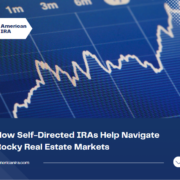Self-Directed Real Estate IRA Basics: Investing in Raw Land and Timber
Most Self-Directed Real Estate IRA investing is done using basic residential properties as the investment vehicle: Single family 2- and 3-bedroom homes, condominiums, small apartment buildings, duplexes and quads. But there is nothing limiting you to these straight-ahead investments. Self-Directed Real Estate IRAs come in all kinds of varieties. If you find a compelling value in farmland, ranch properties, timber and other kinds of real estate investing, you can absolutely pursue it while still combining the advantages of real estate investing with the power of a Self-Directed IRA.
Advantages of Self-Directed Real Estate IRAs
Land is a unique investment with a number of key advantages:
- Even in down markets, Self-Directed Real Estate IRA investments almost never go to zero.
- Usually generates regular income.
- Land produces food, timber, coal and oil – all of which have economic utility that is likely to last as long as civilization lasts.
- You can build rental real estate on a piece of farm or timberland or rent space to advertisers and cell phone tower developers to further boost income. Other potential sources of revenue streams include renting barn and other storage space, natural gas rights, solar panel space rental, wind power generation, grain storage/siloing, summer and October hay rides for the community and special events.
- Rental income and crop/livestock yields from a Self-Directed Roth IRA are tax-free.
- Land/real estate is a historic hedge against stock market volatility.
- Potentially increasing rents and yields amount to significant inflation protection.
- With good tenants, farmland and timber land requires less maintenance and intervention from the landlord than residential and even commercial real estate. You do not have to worry about leaky roofs and faucets and 3 AM calls because of a stopped toilet.
- Farmers generally pay rent twice per year – once in the spring and once in the fall. Which means fewer collection headaches for you.
- Property management expenses are lower. This means your Self-Directed IRA can keep more of the rental income that might otherwise go to a property manager.
- Farmland and timber land is a proven source of passive income – especially when any mortgages are paid off.
Successful land investors are aware of the risks: To do well in Self-Directed Real Estate IRA investing in farm, ranch and timberland, you should have a solid understanding of the industry and the communities in which you are investing.
Be careful to do a thorough title search to ensure you are not buying a property still encumbered with liens.
You should also be in a position to tie up money in the land for a long time. Transaction costs on land can be high, and land is notoriously illiquid. However, this illiquidity is part of the reason it is so potentially profitable – you will not normally need to pay a liquidity premium in the form of lower ROI for the privilege of quick access to your money. This is why Self-Directed Real Estate IRAs and other similar tax advantaged retirement accounts are ideal vehicles for this kind of investing: Time horizons for many Self-Directed Real Estate IRA investors is measured in decades, not months.
Interested in learning more about Self-Directed IRAs? Contact American IRA, LLC at 866-7500-IRA (472) for a free consultation. Download our free guides or visit us online at www.AmericanIRA.com.







